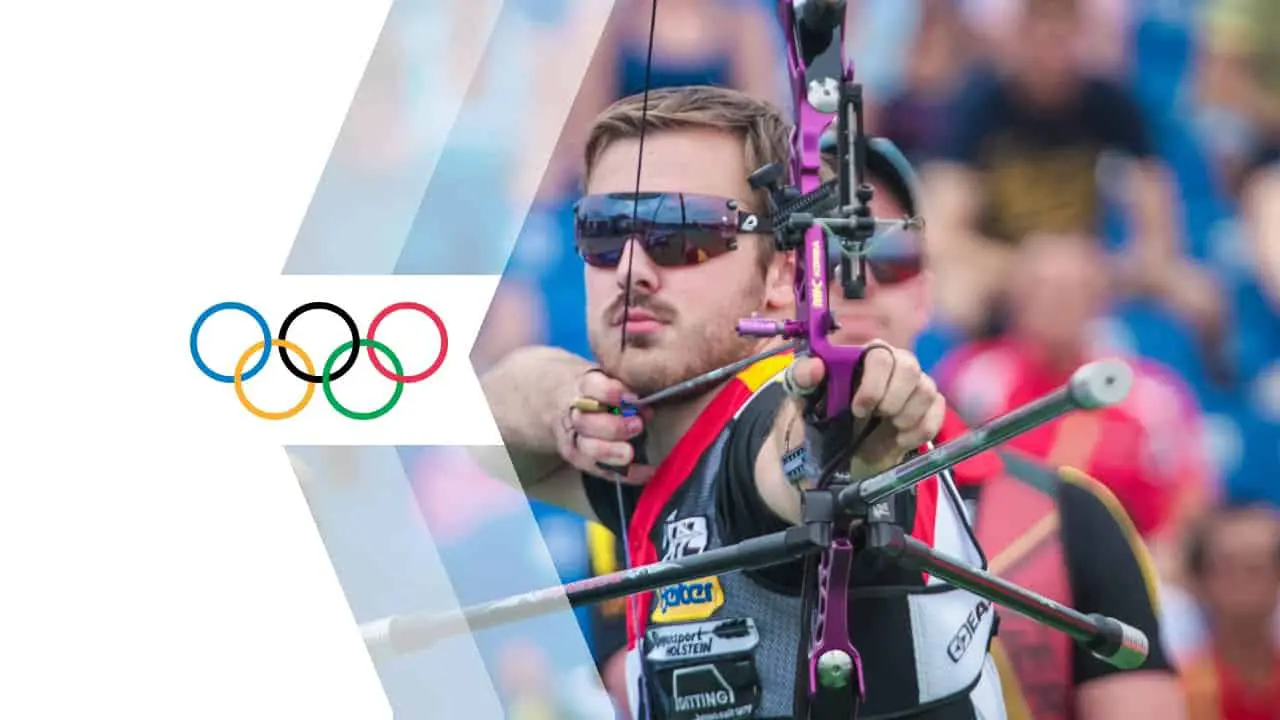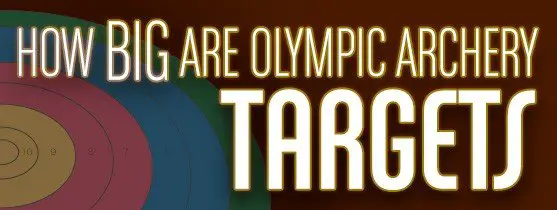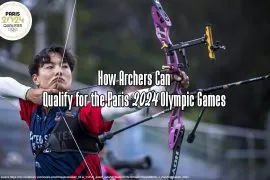In fact, some competitions do not use the round-faced target at all.
Overview
Table of Contents
Archery has been around for nearly 10,000 years when early humans used bows and arrows in hunting and warfare before it became a competitive sport in medieval England. There are many variants of archery, for example, target archery, where competitors shoot at stationary archery targets on a flat range. Field archery has targets that are typically unknown distances away on uneven terrain includes woodland areas. Only target archery is an Olympic sport that is practiced by more than 140 countries around the world.
Archery first appeared at the 1900 Paris Olympics and was also present in 1908 and then again in 1920. But the rules were not consistent and utterly dependent on the host country, which makes it difficult for the athletes. After a 52-year gap from the previous Olympics, the modern sport was reintroduced at Munich 1972’s Olympics and has been on the tournament ever since. At Olympics Tokyo 2020, athletes will compete in women’s and men’s events, women’s and men’s team events, and a mixed team event. The mixed team event has introduced a new addition to the Olympic program.
How big is an Olympic archery target?
The Olympic archery target size is about 48 inches or 1.22 meters in diameter. It has ten evenly spaced concentric rings that have different colors. The gold ring in the center gives either nine or ten points, the red one eight or seven points, the blue five or six points, black four or three points, and finally the white two or one point. The inner gold ring, right at the center of the target, is 4.8 inches in diameter.
The Olympic archery target size is important because the target is positioned 70 meters away from the competing archers. Remember the athletes are focusing on the gold ring in the center of the target; which looks really small 70 meters away. So the distance between the target and the archers has to be adjusted; if the target is smaller than 1.22 meters in diameter.
For example, in other international competitions, a target with a 40 cm or 60 cm diameter face is positioned 18 m away from the archer. A target with an 80 cm diameter face is positioned 30 m and 50 m away from the archer.
WA Rules of the Sport
The International Olympic Committee (IOC) recognizes the World Archery Federation (WA), as the governing body for all archery and Olympic rules. These rules limit outdoor archery distances to between 30m to 90m for senior gentlemen archers. For ladies the distance must be between 30m to 70m.
The indoor distances are either 18 to 25m. Archery competitions are divided into ends where an archer can either shoot 3 or 6 arrows. Archers can shoot up to 3 arrows in 20 ends for indoor competitions. The set time limit to shoot an arrow for indoor competition is 2 minutes for 3 arrows.
Lights or flags are used to warn you if your time is up. This time limit helps prevent archers from taking “eternity” aiming their arrows as others wait restlessly. For 1440 outdoor round, you only have 4 minutes to shoot 6 arrows for the longer distances. The two shorter distances in the Olympics allow 2 minutes to shoot 3 arrows.
Archery in the Olympics
 All archers shoot a round of 72 arrows at the start of the tournament. They do this in 6 ends to reach the maximum score of 720. At the qualification round, the archers are ranked from 1 to 64 and then they move on to the individual head-to-head matches.
All archers shoot a round of 72 arrows at the start of the tournament. They do this in 6 ends to reach the maximum score of 720. At the qualification round, the archers are ranked from 1 to 64 and then they move on to the individual head-to-head matches.
In the individual matches, the set system introduced in 2010 is used to eliminate some archers as others get to progress to the next phase. These matches put two athletes against one another and the athlete that gets the most points at the end of the sets wins.
In the finals, there are 5 sets and each set allows 3 arrows. You have to shoot each arrow in 20 seconds. The athlete that gets the highest score in a set gets 2 points. In case, if the athletes’ scores tie in a set, they both get one point. You win the trophy if you are the first one to get six points.
But there are times when both athletes in the finals get the same number of points. In situation, the athlete whose arrow lands closest to the middle of the target wins the competition. The other athlete wins the silver while the two semifinal losers compete for the bronze in a separate match.
Mixed Team and team matches are also decided by sets, but in team-set scenarios, each set consists of six arrows, and mixed-team set scenarios consist of four arrows in place of three arrows. The winning team is the first to win 5 points.
In case of a tie after four sets, each player from the team shoots an arrow. The team that has the most points wins. If the teams are still tied, the team with the arrow closest to the middle ring wins.
These competitive formats create a series of win-or-lose scenarios, both mentally and physically. If their nerves shake an archer before releasing the arrow, they must overcome them to have the best chance of winning. The physical and emotional tension present in archery leads some competitors to perform at their best, while others find it challenging.
The View of Tokyo 2020 Olympic games
Korea is the dominant country in Olympic archery. It has won gold medals in all four events staged at Rio 2016, with its women’s team having never been beaten since 1988.
It has top players such as Kang Chae Young and Kim Woojin, world champions twice but eliminated in the second round at Rio Olympics 2016 after setting a world record.
The USA is the second-best performing country when it comes to men’s archery, with Brady Ellison won a bronze medal at Rio Olympics 2016 and the team won silver at both Rio 2016 and London 2012.
Frequently Asked Questions(FAQs)
Ques: Some archers shoot left-handed, and some archers shoot right-handed. Interestingly, though, some right-handed archers shoot left-handed and vice versa – why?
Ans: This is because of their ‘dominant eye.’
Click here to read more.
Ques: How far away is the target in Olympic archery?
Ans: Competitors in Olympic archery competitions shoot up to 70 meters (for recurve bow).
Ques: What bows do Olympic archers use?
Ans: At the shooting range, athletes aim for similarly colored targets of a uniform distance. Target archery uses the five-color, 10-ring target in three sizes: 40 centimeters, 80 centimeters, and 122 centimeters. The division size depends on the age of a player and which equipment style they use.
Conclusion
The archery target has to be colorful because of the distance between it and the archers. In fact, the golden center looks so small from a distance that it would be hard to hit it if the target was of a neutral color. The target face is often tilted 15 degrees and its dead center is 130 cm from the ground.
In the Olympics the targets must have:
- A round 1.22 m face
- Rings that are evenly spaced but painted different colors
- Flags on top to indicate the direction of the wind
Archery is a wonderful sport that is so much better than golf (sorry golfers). You need to have a steady hand, a strong upper body and a keen eye to play this sport. If you want to make your own Olympic Archery targets, check out our DIY post!









5 Comments
Pingback: The Heart (And Mind) Of A Champion | Stand Apart
Pingback: Making the U.S. Olympic Archery Team - Boss Targets
Pingback: Types of Archery Competitions - Boss Targets
Pingback: Best Beginners Bow & Archery Style? - Boss Targets
Pingback: Making the U.S. Olympic Archery Team - Boss Targets